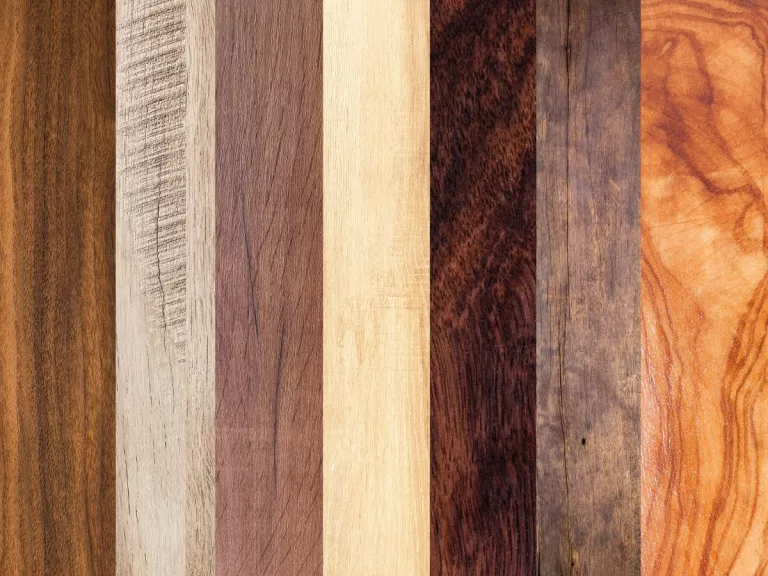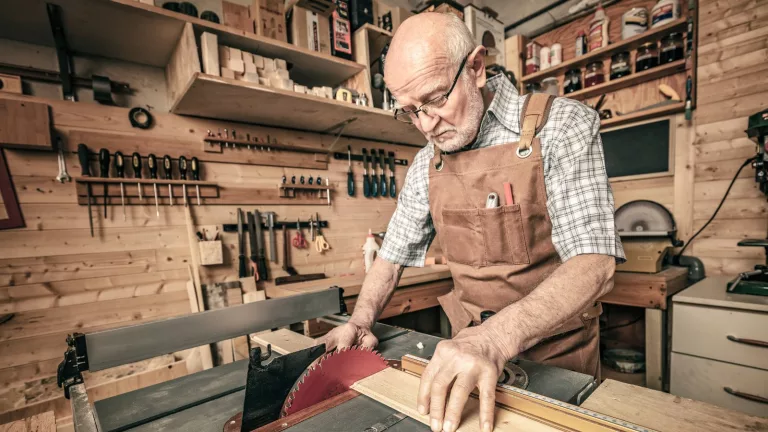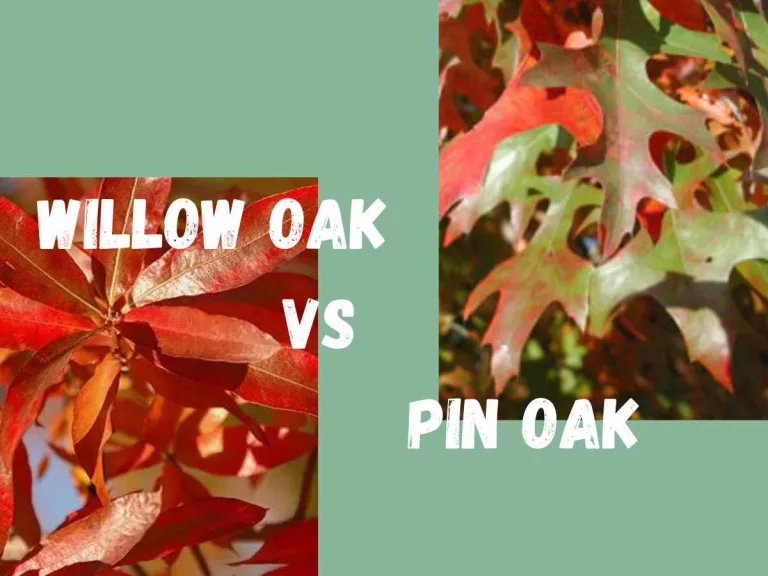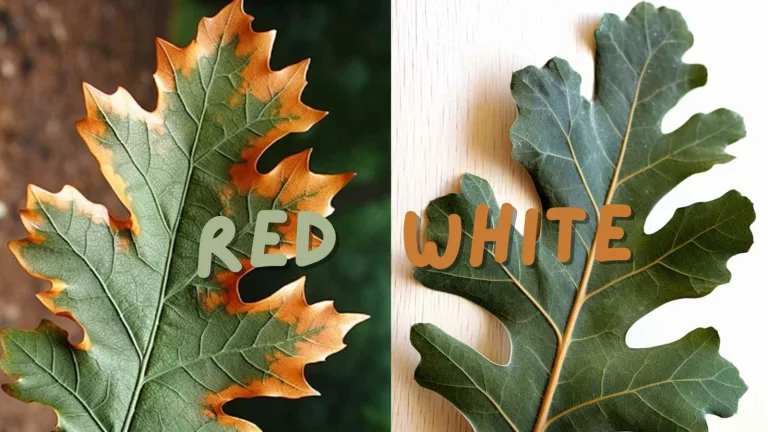Do Wasps Eat Wood? Exploring the Myths and Amazing Realities of Wasp Behavior

Key Takeaways
Do Wasps Eat Wood?: No, wasps do not eat wood. They use wood fibers to construct their nests but do not consume wood as a food source. Paper wasps use their mandibles to chew and scrape wood into fine fibers, mixing them with saliva to create a pulp for constructing their paper-like nests. And horntail wasps bore into wood for laying eggs, not for feeding.
Diet and Wood Interaction: Debunks the myth about eating wood, explaining their actual diet and use of wood for nest building.
Environmental Role: Highlights the ecological significance of wasps and their interaction with wood in the environment.
Managing Wasp Presence: Offers strategies for both DIY and professional insect management, with real-world case studies for practical insights.
Resources for Further Learning: Provides expert insights into wasp behavior and encourages further exploration of the topic through additional resources.
Hey there! Ever wondered about those buzzing wasps around your garden and their mysterious ways? Well, you’re not alone. Wasps and their behavior, especially regarding wood, have sparked curiosity and misconceptions for ages. Stay tuned as we explore into the intriguing world of wasps, debunk myths, and discover fascinating facts about their lives and habits.
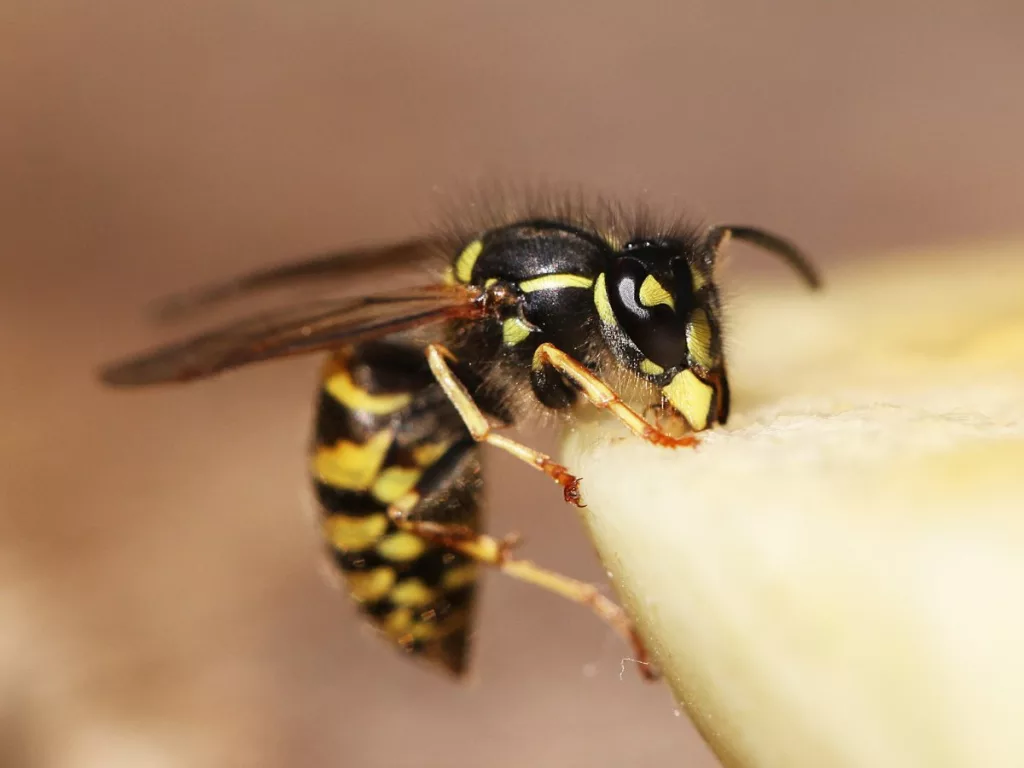
Understanding Wasps: Do Wasps Eat Wood?
Wasps are fascinating creatures, and their diet is as diverse as their species. From the common yellowjackets to the intriguing paper wasps, each has its unique dining preferences. But here’s a burning question that often pops up: Do wasps actually eat wood? Let’s clear the air and set the facts straight.
Common Misconceptions About Wasps
You might have heard that wasps chew through wood like a hot knife through butter, but it’s time to bust this myth and understand the truth about their interaction with wood:
- Wasps Don’t Eat Wood: Contrary to popular belief, wasps do not consume wood as a food source.
- Misconception Leads to Fear: The misunderstanding about wasps eating wood often leads to unnecessary fear and sometimes even the unwarranted destruction of their habitats.
- Appreciation and Coexistence: By understanding the reality of wasp behavior, we can better appreciate these creatures and learn to coexist with them peacefully.
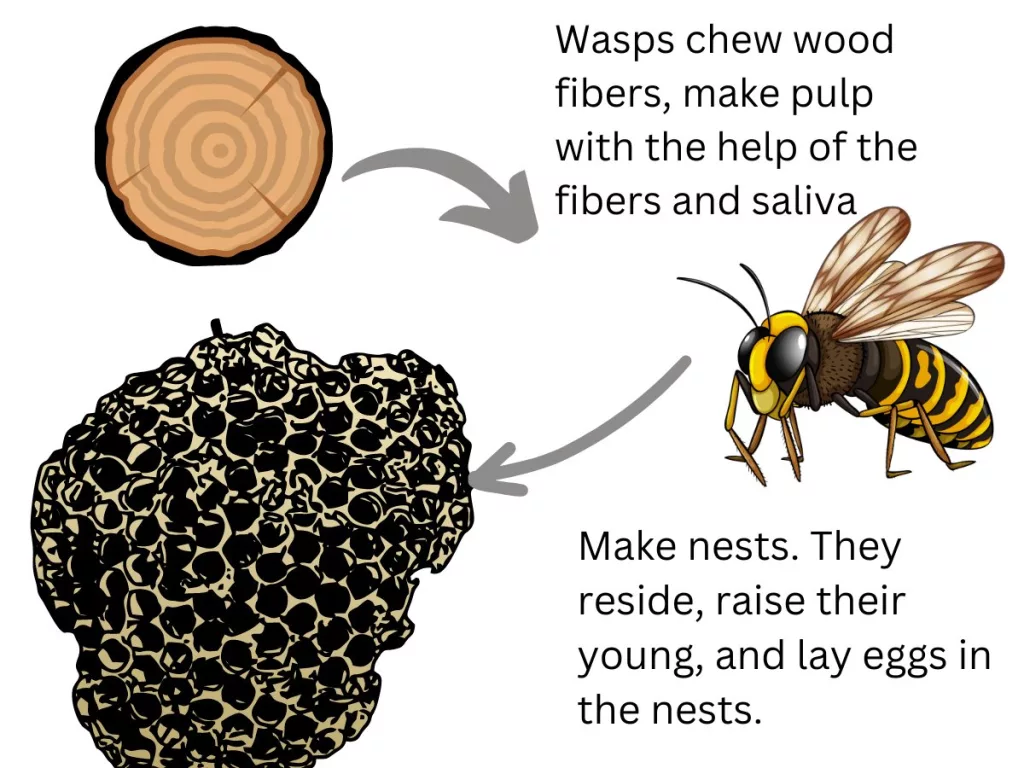
The Actual Diet
So, what do adult wasps and their larvae actually eat? Let’s take a closer look at their diet and how wood plays a role in their lives:
- Adult Wasps’ Diet: Adult ones primarily enjoy a sugary diet, feasting on nectar and other sweet substances.
- Larvae’s Protein-Rich Diet: The larvae, on the other hand, have a diet rich in protein, feeding on insects provided by the adult wasps.
Wasp Species and Their Interaction with Wood
It’s a diverse world out there in the wasp kingdom, and each species has its unique way of dealing with wood. Understanding this can change the way we view these buzzing neighbors of ours.
Here’s a table on the wasps’ wood related behaviors.
| Wasp Species | Image | Behavior/Interaction with Wood |
|---|---|---|
| Paper Wasps | 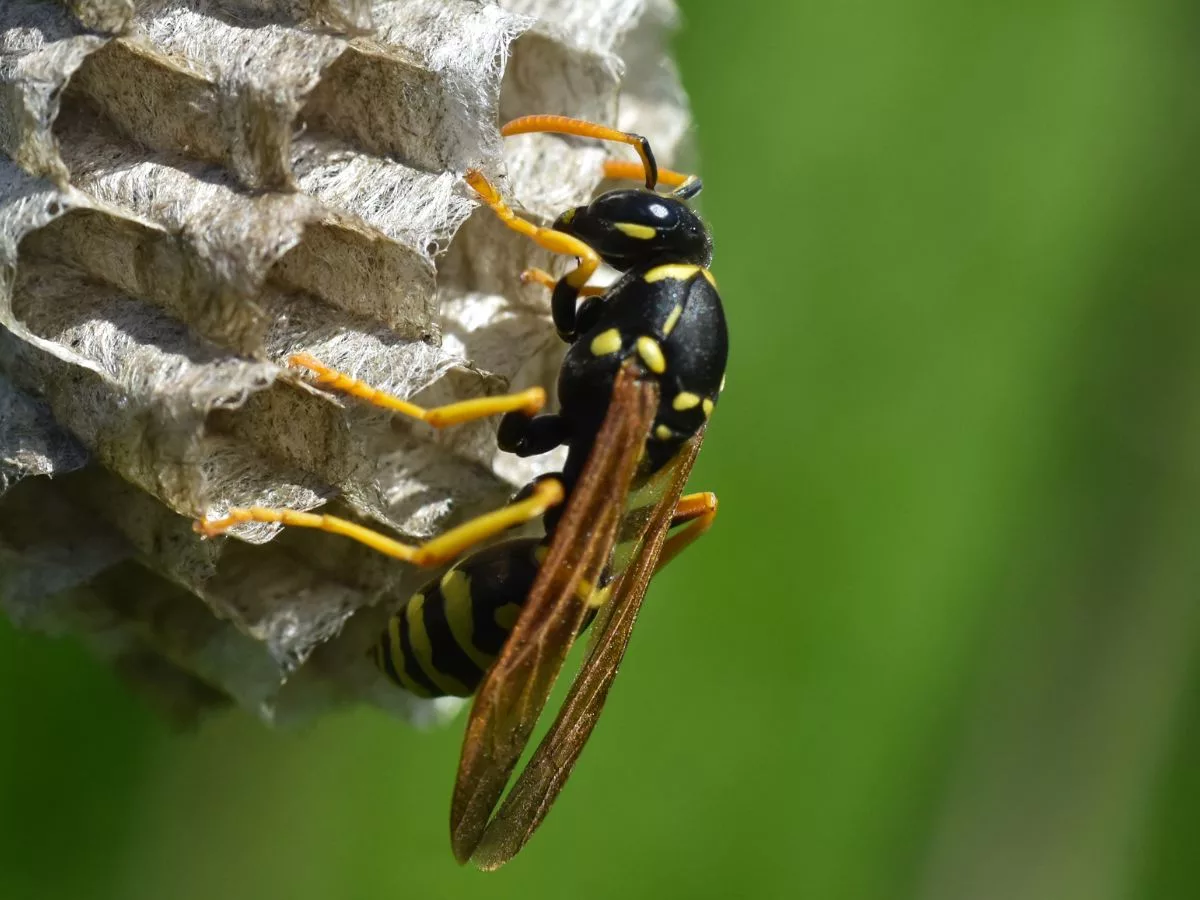 | Use wood fibers to construct paper-like nests; chew wood into pulp with mandibles. |
| Horntail Wasps |  | Bore into wood to lay eggs; do not consume wood. |
| Yellowjackets | 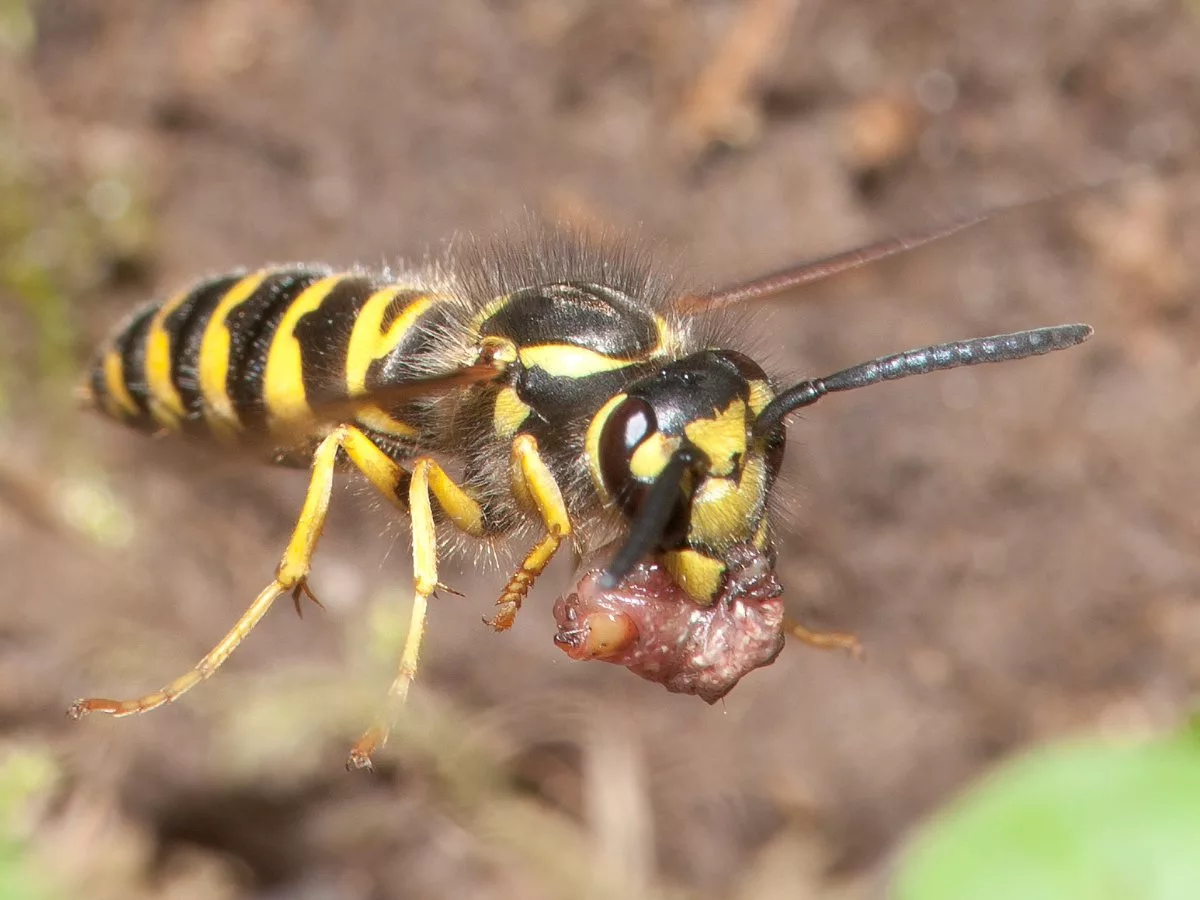 | Typically do not use wood; build nests underground or in dark areas. |
| Bald-Faced Hornets |  | Build large, enclosed paper nests in trees or on buildings, using wood fibers. |
| Mud Daubers | 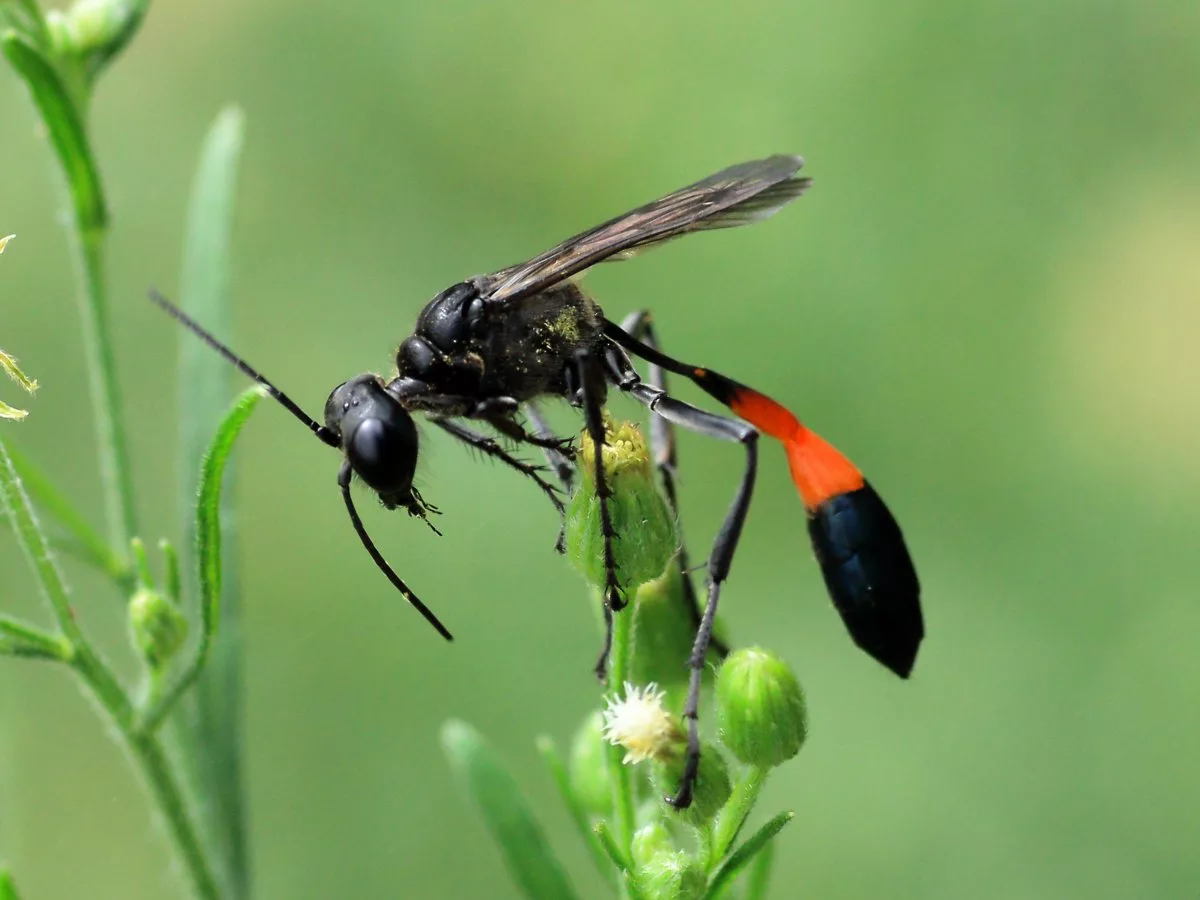 | Do not use wood; known for building nests with mud. |
| Cicada Killers | 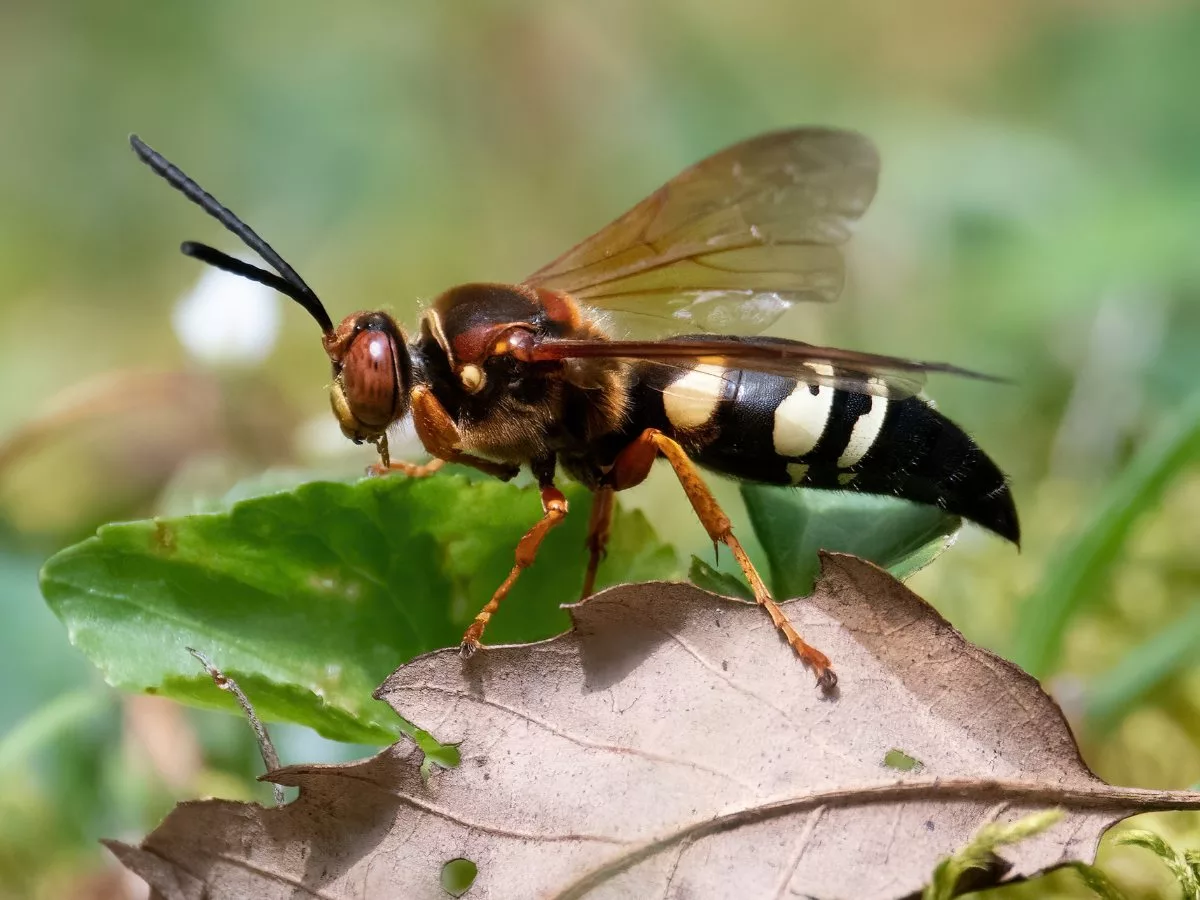 | Primarily ground-dwellers; interaction with wood is minimal. |
| European Wasps |  | Similar to yellowjackets; nests are often in cavities but not typically wood-based. |
| Potter Wasps |  | Build small, pot-like mud nests; minimal interaction with wood. |
Paper Wasps
Now, let’s focus on one of the most common characters in our gardens – the paper wasps. These guys are the architects of the wasp world. Their use of wood and the impact they have on our habitats is nothing short of remarkable.
Nest Construction Process
- Gathering Materials: They strip tiny fibers from dead wood and plant stems.
- Creating the Nest Material: They mix these fibers with saliva to form a water-resistant pulp.
- Constructing the Nest: Using this pulp, they meticulously build their umbrella-shaped nests.
- Purpose Beyond Shelter: These nests are more than just homes; they provide a nurturing environment for the young.
Identifying and Managing Paper Wasp Nests
Now, let’s talk about how you can spot and manage these nests. First off, don’t panic! Paper wasp nests are usually found under eaves, in attics, or on tree branches. They look like open combs with a papery covering. If you find one, remember, these wasps are generally non-aggressive unless provoked. To safely manage these nests, it’s best to call in the experts, especially if the nest is large or in a tricky spot. Remember, it’s about coexisting with nature, not disrupting it. Let’s respect their space while protecting ours.

Horntail Wasps
This family ( about 85 species) often gets a bad rap due to their wood-boring behavior. But hold on, there’s more to their story than just drilling into wood. Understanding their unique lifestyle helps us appreciate their role in nature and manage our interactions with them more effectively.
Lifecycle
Horntail Wasps have an interesting life cycle that’s closely tied to wood. These creatures lay their eggs inside trees or timber, where the larvae then grow, feeding on the wood around them. But here’s the kicker – they’re not eating the wood for food; they’re creating a cozy nursery for themselves. This wood-boring activity can have various impacts on trees and wooden structures. In forests, they’re part of the natural cycle, aiding in the decomposition process. However, in our homes, they can be a bit of a nuisance, weakening wooden structures over time.
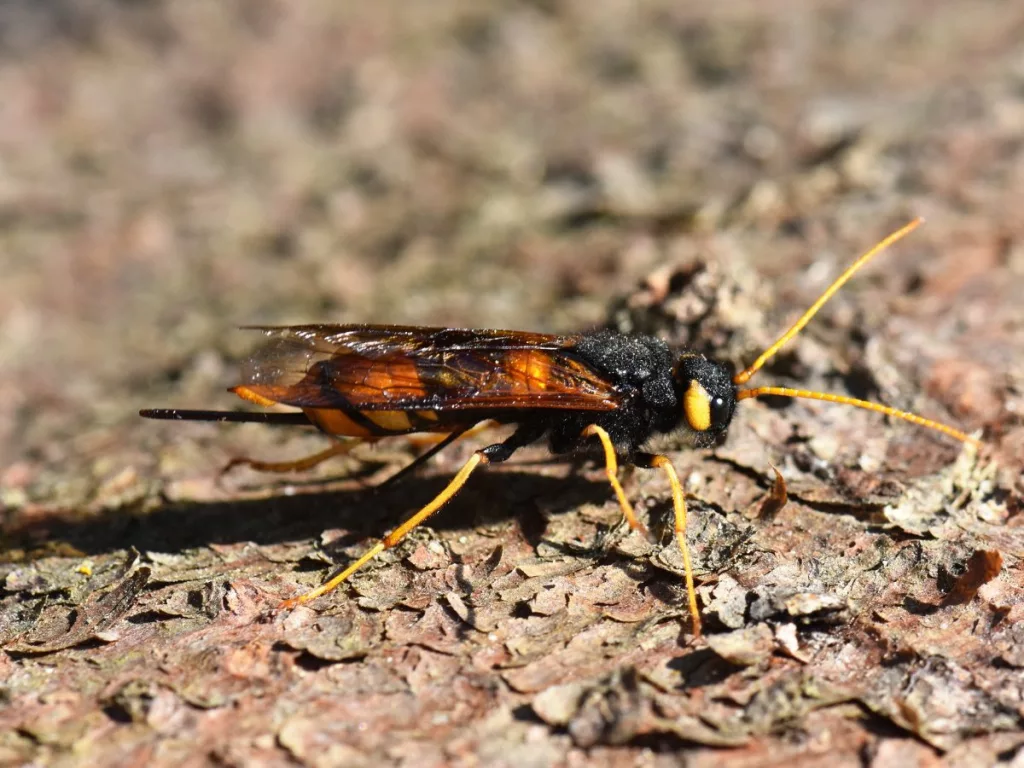
Addressing Horntail Wasp Infestations
Dealing with the infestations effectively involves early detection and preventive measures:
- Monitor Wooden Structures: Regularly check for signs of infestation, such as small holes or sawdust on wooden surfaces.
- Early Intervention: Addressing signs of wasp activity early can prevent larger infestations.
- Simple Fixes: Seal cracks and treat wood to deter Horntail Wasps from nesting.
- Professional Assistance: For significant infestations, seek help from pest control experts to manage the situation safely and effectively.
- Environmental Consideration: Professional interventions can handle wasp issues while minimizing harm to the wasps and the surrounding environment.
You can watch this video of a wasp scraping untreated wood surface.
Environmental Impact of Wasps
Let’s explore the ecological significance of wasps and their unique relationship with wood, highlighting their crucial role in our ecosystems:
- Nest Building: Wasps use wood to construct their nests, showcasing their intricate relationship with natural materials.
- Contributing to Ecological Cycles: Their use of wood in nest building plays a part in the broader ecological cycle.
- Aiding Decomposition: Wasps assist in the decomposition of dead trees, facilitating nutrient recycling in nature.
- Symbiotic Relationship: Their interaction with wood reflects a symbiotic relationship that benefits the ecosystem.
- Pollination Role: They act as pollinators and controllers of pest populations.
Human-Wasp Interactions Regarding Wood
Imagine you’re in your garden, and there’s a wasp buzzing around a wooden fence. What do you do? These encounters are common, and understanding them is key to coexisting peacefully. Wasps interacting with wood in gardens, parks, or near wooden structures are usually in their element, doing what they do best – building and foraging. If you find a nest in your backyard, remember, it’s their way of contributing to nature. Managing these interactions involves respecting their space and adopting preventive measures like keeping wood treated and gardens well-maintained.
Preventive Measures and Wasp Management
Hey there, homeowners and nature enthusiasts! Dealing with wasps doesn’t always have to be a battle. With the right strategies, managing their presence can be a breeze. Let’s explore some effective ways to keep these buzzing visitors at bay, ensuring a peaceful coexistence.
Natural Repellents and Deterrents
Ever thought of using what’s in your pantry to keep wasps away? Nature has gifted us with some amazing repellents that are safe, easy to use, and quite effective. From peppermint oil to vinegar sprays, these home remedies can work wonders in deterring wasps. But how do you whip up these natural solutions?
- Peppermint Oil Spray:
- Mix 1 tablespoon of peppermint oil with 4 cups of water.
- Pour the mixture into a spray bottle.
- Shake well and spray around areas where wasps frequent, such as patios, decks, and outdoor eating areas.
- Vinegar Spray Solution:
- Combine equal parts of white vinegar and water in a spray bottle.
- Add a few drops of dish soap to the mixture.
- Shake well and spray around the perimeter of your outdoor spaces and near wasp nests.
- Citrus Oil Spray:
- Mix a few drops of citrus essential oil (like lemon or orange) with water in a spray bottle.
- Spray the solution around your garden, windowsills, and doorways.
- Cucumber Peel Repellent:
- Place cucumber peels in your garden or on your patio.
- The natural compounds in cucumber peels are a deterrent for wasps.
Remember, while these natural solutions can help deter wasps, they are not a permanent solution for large infestations. For significant wasp problems, it’s advisable to consult with pest control professionals.
Professional Wasp Control
Sometimes, the wasp situation might be a bit more than you can handle on your own. That’s when it’s time to call in the pros. Professional pest control services have the expertise and equipment to safely and effectively manage wasp infestations. But when exactly should you seek their help? Let’s look at scenarios where professional intervention is the best course of action and get an overview of the methods they use.
DIY vs. Professional Solutions
When it comes to managing wasps, the dilemma between taking a do-it-yourself approach or calling in professionals is common. Each method has its merits and challenges, and the best choice often depends on the specific circumstances you’re facing. Let’s try to understand the effectiveness and safety of both DIY and professional solutions, supplemented by real-life case studies that bring these methods to life.
Case Studies: DIY Solutions in Action
Case Study 1: The Homemade Trap Triumph
In a suburban backyard, a family successfully managed a small wasp problem using homemade traps. They combined sugar water, vinegar, and a drop of dish soap in a jar, creating a simple yet effective trap. The wasps were attracted to the sweet mixture but couldn’t escape, significantly reducing their presence without the use of harsh chemicals.
You can watch this video for a clear understanding.
Case Study 2: Essential Oils as a Natural Repellent
A garden enthusiast in a mild climate used a mixture of peppermint oil and water sprayed around their patio and garden areas. This natural solution repelled wasps effectively throughout the summer, allowing for peaceful outdoor activities without the worry of wasp disturbances.
Following video shows the process he followed.
Case Studies: Professional Interventions
Case Study 1: The Large Nest Removal
A family discovered a large wasp nest in their attic. Recognizing the risk and complexity of the situation, they called a professional pest control service. The experts safely removed the nest, ensuring that the wasps were relocated without harm to the family or the technicians. This intervention prevented potential stings and allowed for a thorough inspection to prevent future infestations.
Case Study 2: Commercial Property Infestation
A commercial property with multiple wasp nests in its outdoor areas required professional intervention. The pest control team used environmentally friendly insecticides and implemented preventive measures, such as sealing potential entry points and advising on landscape changes to deter future wasp activities.
Safety Measures and Best Practices
Whether you’re going the DIY route or calling in the experts, safety should always be your top priority. We’ll cover essential safety measures to keep in mind while managing wasps and discuss long-term strategies to prevent future infestations. Remember, understanding and respecting these creatures is key to managing them effectively and safely.
These case studies highlight the effectiveness of both DIY and professional approaches in different scenarios. While DIY methods can be effective for smaller issues, professional help becomes crucial for larger or more complex infestations, ensuring safety and long-term resolution.
Expert Insights and Scientific Research
Stay tuned for the latest in wasp research! Ongoing and future projects are delving deeper into how wasps interact with wood. These studies promise to shed new light on their behavior, offering fresh insights and understanding. Keeping abreast of this research not only satisfies our curiosity but also informs better conservation and management practices.
- A journal publication: “Relative preference of wood by Polistes flavus L. for Nest building” by Shahmshad A. Khan, Muhammad Anjum Aqueel, Mushtaq Ahmad, Muhammad Munawar idris published in https://www.entomoljournal.com/
- A famous book: Wasp Facts & Information by James Andrew Jones
- Article on wasp behavior on Natural History Museum, What Do Wasps Do?
Conclusion
Well, folks, we’ve journeyed through the buzzing world of wasps, uncovering truths, debunking myths, and gaining a newfound understanding. It’s time to wrap up our adventure with some key takeaways. Remember, wasps aren’t just uninvited picnic guests; they play a crucial role in our ecosystem. From pollinating plants to controlling pests, their contributions are invaluable. So, how about we shift our perspective from fear to appreciation? Let’s embrace the idea of informed and peaceful coexistence with these fascinating creatures. By understanding their behavior and habitats, we can find ways to live alongside them harmoniously.
FAQs
Can wasps eat wood?
No, they cannot eat wood. They use wood fibers to build their nests but do not consume the wood itself.
Why do wasps chew wood?
Paper wasps chew wood to collect fibers for constructing their paper-like nests, not for feeding. Horntail wasps lay their eggs inside wood bores, where the larvae develop, but they do not construct external nests from wood like paper wasps do.
Do Woodpeckers Eat Wasps?
Yes, woodpeckers do eat wasps. They often feed on various insects, including wasps, as part of their diet. Woodpeckers may also target wasp nests to eat the larvae inside.
Can Wasps Cause Damage to Wooden Structures?
While wasps don’t eat wood, some species can cause minor damage by scraping wood fibers from wooden structures to build their nests.
What Do Wasps Eat?
Adult ones generally feed on nectar, sweet plant secretions, and sometimes other insects. The larvae are typically fed insects caught by adult wasps.
Do Wasps Eat Through Wood?
No, they do not eat through wood. While some species, like the horntail wasp, bore into wood to lay eggs, they do not consume the wood itself.
Do Wasps Like Wood?
Yes, some wasp species, like paper wasps, use wood fibers to build their nests, indicating a preference for wood in nest construction.
